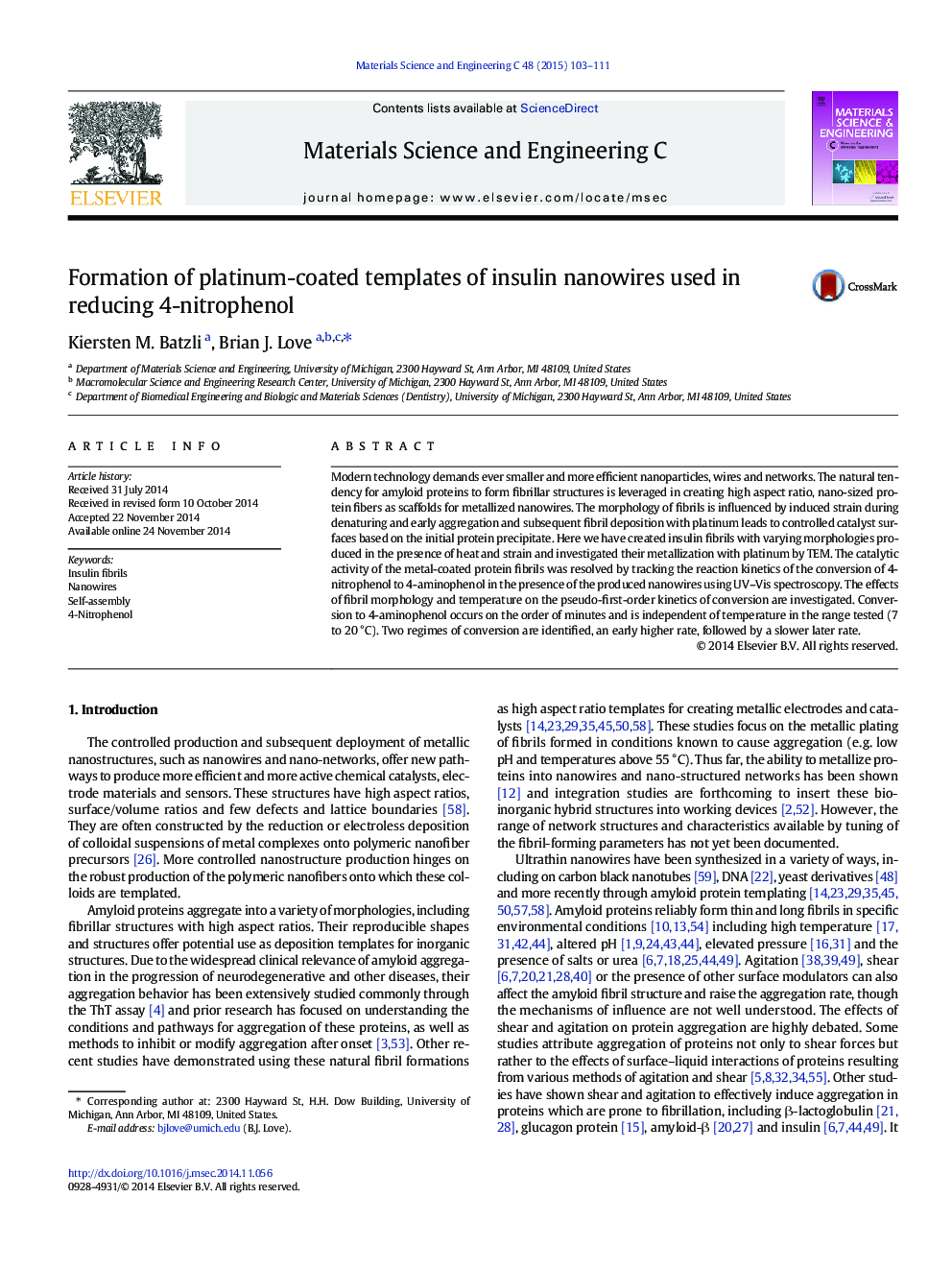| Article ID | Journal | Published Year | Pages | File Type |
|---|---|---|---|---|
| 1428438 | Materials Science and Engineering: C | 2015 | 9 Pages |
•We have created insulin fibrils of various morphologies with heat and strain.•Fibrils have been used as templates for platinum nanowires to be used as catalysts.•Reduction of 4-nitrophenol by platinum fibrils was tracked by UV–Vis.•Catalytic activity is compared between strain-varied morphologies.•No evidence of thermal influence on reaction kinetics was detected.
Modern technology demands ever smaller and more efficient nanoparticles, wires and networks. The natural tendency for amyloid proteins to form fibrillar structures is leveraged in creating high aspect ratio, nano-sized protein fibers as scaffolds for metallized nanowires. The morphology of fibrils is influenced by induced strain during denaturing and early aggregation and subsequent fibril deposition with platinum leads to controlled catalyst surfaces based on the initial protein precipitate. Here we have created insulin fibrils with varying morphologies produced in the presence of heat and strain and investigated their metallization with platinum by TEM. The catalytic activity of the metal-coated protein fibrils was resolved by tracking the reaction kinetics of the conversion of 4-nitrophenol to 4-aminophenol in the presence of the produced nanowires using UV–Vis spectroscopy. The effects of fibril morphology and temperature on the pseudo-first-order kinetics of conversion are investigated. Conversion to 4-aminophenol occurs on the order of minutes and is independent of temperature in the range tested (7 to 20 °C). Two regimes of conversion are identified, an early higher rate, followed by a slower later rate.
